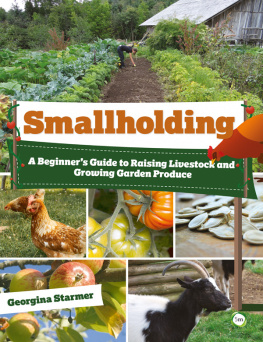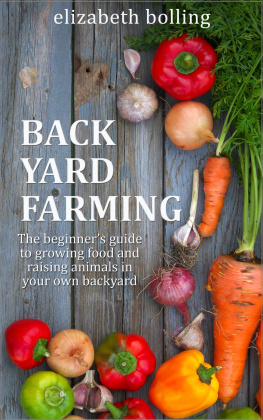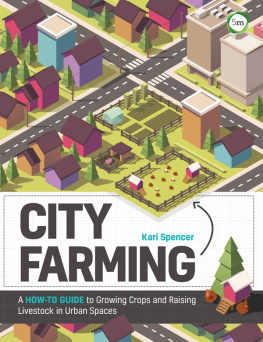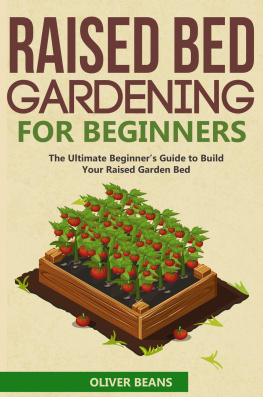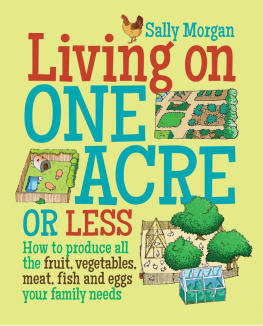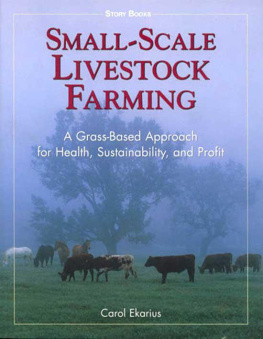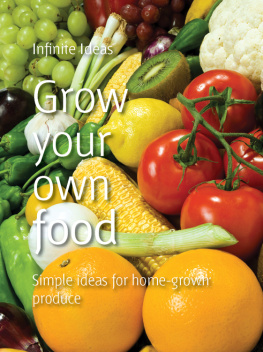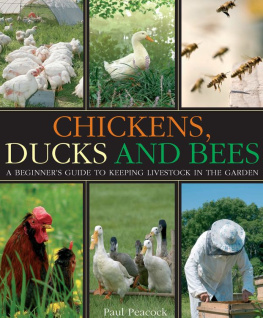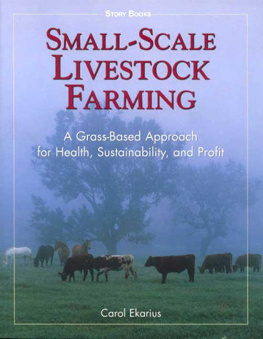First published 2018
Copyright Georgina Starmer 2018
All rights reserved. No part of this publication may be reproduced, stored in a retrieval system, or transmitted, in any form or by any means, electronic, mechanical, photocopying, recording or otherwise, without prior permission of the copyright holder.
Published by
5M Publishing Ltd, Benchmark House, 8 Smithy Wood Drive, Sheffield, S35 1QN, UK
Tel: +44 (0) 1234 81 81 80
www.5mpublishing.com
A Catalogue record for this book is available from the British Library
ISBN 9781910455920
Book design and layout by Alex Lazarou
Printed by Replika Press Ltd, India
Photos by Georgina Starmer unless otherwise indicated
Photo credits:
pp. 131, 239 Sophie Aylett. Meadows Farm Vets
pp. 171 (top), 174175 Ganders Goat, Ian Horton
p. 178 Ashworth Pygmy Farm, Nicola Ashworth
pp. 235, 237 (top), 241, 244 Babbington Herd, Carol Easom
pp. 260261 Chagfarm
pp. 262263 Bosavern Farm
Creative Commons photo credits:
p. 3 (top) Coleen Smith
p. 23 (top) Kim Traynor
p. 23 (middle) Leonora Ellie Enking
p. 23 (bottom) Evelyn Simak
p. 54 (bottom) Jamain
p. 76 The Salfo
p. 78 (bottom) Justin Snow
p. 92 (top) Paul Harrop
p. 117 Julien Parens
p. 119 (bottom) Newtown Graffiti
p. 135 (bottom) Garrett Heath
p. 138 (top) Rebecca Shiraev
p. 153 (top) Chris Gunns
p. 153 (bottom) Lewis Clarke
p. 154 Mark Robinson
p. 160 (top) Graibeard
p. 162 (bottom) Santeri Viinamki
p. 193 Hannah Gilbert
p. 207 Roy Hayworth
p. 208 Jim Champion
p. 257 Lewis Clarke
p. 258 Alan Walker
Illustration credits:
p. 160 (bottom) Images Learning Resources 2017
Vector art credits and sources:
Tree (p.v, 24, 97), Credit: Teguh Mujiono; Apple tree (p.27), Credit: beta757, Shutterstock; Jars (pp.84, 87, 91, 95), Credit: Aleks Melnik, Shutterstock. Goose (p.iv), Pig (p.vii), Cow (p.ix), Rooster (p.139): vexels.com; Carrot (p.ii, 1), Plants (p.2, 19, 78, 81, 101), Plant (p.107), Thistle (p.109): 4vector.com; Chickens (p.vi, 136, 165, 166), Grass (pp. 104105), Sheep (p.129), Goat (p.179, 260), Sheep (p. 218, 226): pixabay.com (CC0 Creative Commons); Pig (p.vii, 201), Cow (p.131, 233, 238), Goat (p.170, 183), Llamas and alpacas (p.188, 190), Sheep (p.216, 221). Bee (p.250): vecteezy.com; Pig (p.120, 206): worldartsme.com; chapter openers illustrations by Nick Morton

In this book, the concept of smallholding covers everything from growing your own fruits and vegetables in your garden, to small-scale farming for a profit. Although you might think that theres no way you could apply traditional smallholding to your back garden, youd be surprised. It is about finding a very productive way to make use of a small piece of land, whether its a few acres in the countryside, or a typical suburban garden.
Officially, a smallholding is classed as an area of land that is less than 50 acres in size and used for farming purposes, either with a view to making a profit or living self-sufficiently. However, there are aspects of smallholding, such as working the land and raising livestock, which can be incorporated into your lifestyle no matter where you live or how much land you have. Any sized area can be productive, even a balcony. It is about how well you use the space and, wherever you are on the scale, the smallholding lifestyle can be enjoyed by anyone.
I cant keep a cow on a balcony, I hear you say, and yes, thats true, so unless you want to rent a field from someone, cattle might not be the livestock for you. But you could keep bees and harvest your own honey, or grow a myriad of fruit, herbs and vegetables. An average-sized back garden will house a few chickens, so you could eat your own meat and eggs.
A self-sufficient lifestyle is appealing, yet being truly self-sufficient is no easy task and something that requires all ones time to be dedicated to producing enough food to eat. However, it is possible to enjoy a realistic happy medium, where one can eat home-grown food and be as self-sufficient as possible. Most people cant give up their day job and become full-time food producers, but with just a little part-time effort, it is amazing what can be achieved.
Living sustainably is a massive part of smallholding, and something that more people want to achieve. We go to supermarkets to buy our food, which all comes neatly wrapped and packed in plastic. The food miles much of this produce has travelled before it arrives on our plates is staggering, and because of the time it takes to cover those distances, fruit and vegetables are harvested before they are ripe and are not at optimal nutritional value. Unless you go for the more expensive organic options, most produce is grown using a variety of chemicals from pesticides to fertilisers and preservative sprays. Also, commercial varieties of fruit and veg are selected for their resistance to pests and diseases, uniformity and fastness of growth, not for taste. The result is that today we get to eat a lot of mass-produced, bland-tasting food that often has questionable nutritional value.
The same can be said of meat produced from large factory farms. Although in the UK we have some of the most developed animal welfare regulations, the conditions in which livestock are kept in these establishments is enough to make one not want to eat meat. A lot of the meat in the supermarkets is from other countries, where conditions can be worse. Intensively farmed animals are bred to be fast growing and they eat large amounts of grain-based feeds to get to slaughter weight quickly. They are often pumped full of antibiotics as they do not have much disease resistance, and are often kept in cramped conditions. The result is meat that is fairly tasteless from animals with a poor quality of life.
This has not always been something that even gets thought about when buying meat, but now awareness has grown and more people want to take back control by eating locally sourced meat from well-cared-for animals, and produce like this is becoming sought out by consumers. It is consumers that create a demand for a product, and the more people want to eat quality food, the more it will be available. This is all good news for a smallholder who not only wants to eat good food, but wants to make a profit. Niche and artisan products appeal to consumers who care about where their food comes from, and the effects of its production on the environment.
For a beginner smallholder, its all about learning. Maybe you already keep poultry and want to begin with other livestock, maybe you live in the city and want to find ways to grow more of your own food, or perhaps you dream of moving to an acre or two in the countryside and want to learn about dairy cattle. Whatever the reasons, there are many ways to incorporate the joy of smallholding into your life. It is a lifestyle change that appeals to many people who want to escape the rat race, or just want a more relaxed, healthier and varied way of life. Growing your own produce and raising livestock can help you live well and gain an abundance from your land that was previously untapped, which can also save you money.
Smallholding is flexible, and through trial and error you will learn what works best for your land and your circumstances. The opportunity to try many things is diverse, and you will work out how to use your land productively. For example, by raising pigs in an apple orchard, the land is being used for two purposes at the same time. Different elements of land management and raising livestock work together to be more productive than land that is simply used for growing acres of crops, actually making smallholding much more productive per acre than larger-scale farming. It also has the benefit of having a lower impact on the environment and wildlife.

